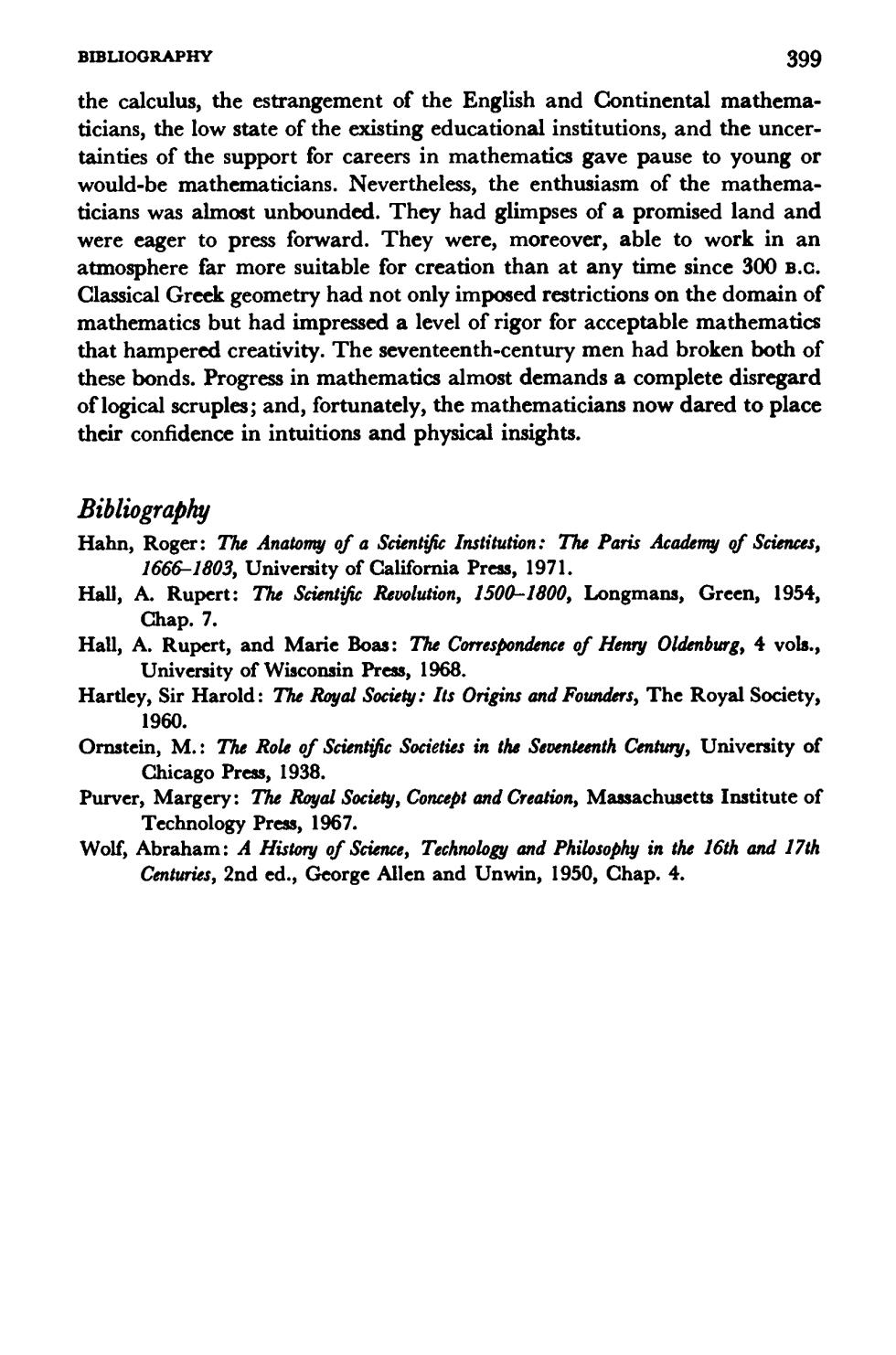正在加载图片...

BIBLIOGRAPHY 399 the calculus,the estrangement of the English and Continental mathema- ticians,the low state of the existing educational institutions,and the uncer- tainties of the support for careers in mathematics gave pause to young or would-be mathematicians.Nevertheless,the enthusiasm of the mathema- ticians was almost unbounded.They had glimpses of a promised land and were eager to press forward.They were,moreover,able to work in an atmosphere far more suitable for creation than at any time since 300 B.c. Classical Greek geometry had not only imposed restrictions on the domain of mathematics but had impressed a level of rigor for acceptable mathematics that hampered creativity.The seventeenth-century men had broken both of these bonds.Progress in mathematics almost demands a complete disregard of logical scruples;and,fortunately,the mathematicians now dared to place their confidence in intuitions and physical insights. Bibliography Hahn,Roger:The Anatomy a Scimtietitution:The Paris Academy Sciemes sity of Califor mia Press,1971. Hall,A.Rupert:The Scientific Revolution,1500-1000,Longmans,Green,1954, Chap.7. Hall,A.Rupert,and Marie Boas:The Correspondence of Henry Oldenburg,4 vols., University of Wisconsin Press,1968. Hartley,Sir Harold:The Royal Sc:Is Origins and,The Royal Soccty, 1960. Ornstein,M.:The Role of Scientific Societies in the Seventeenth Century,University of Chicago Press,1938. Purver,Margery:The Royal S and Cration,Massachusetts Instituteof Technology Press,1967. Wolf,Abraham:A History of Science,Technology and Philosophy in the 16th and 17th Centuries,2nd ed.,George Allen and Unwin,1950,Chap.4